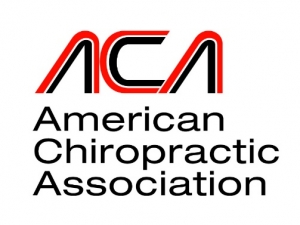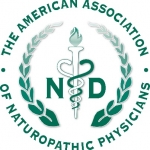Addressing Opioid Abuse and Non-Opioid Pain Management
March 8, 2016
Chiropractic, Naturopathic and Acupuncture Leaders Step Up to the Challenge
by John Weeks, Publisher/Editor of The Integrator Blog News and Reports Action relative to the nation’s opioid challenges is escalating. The sight of the $1.1-billion Opioid Initiative proposed by President Obama in the next federal budget to fight the opioid abuse epidemic has brought activity to the forefront. The particularly good news is that a number of integrative health professional organizations are stepping up to address non-opioid pain management methods. Here is a quick overview. American Chiropractic Association’s Position Statement and Campaign At the 2016 National Chiropractic Leadership Conference (NCLC), the House of Delegates of the American Chiropractic Association (ACA) adopted a policy statement noted here “proposing a solution to the dual public health concerns of inadequate pain management and opioid abuse.” The policy statement resolved that “a coordinated, multi-faceted expansion of integrated evidence-based, non-pharmacologic therapies as front-line treatment options for pain is warranted.” They recommended the following action steps:
At the 2016 National Chiropractic Leadership Conference (NCLC), the House of Delegates of the American Chiropractic Association (ACA) adopted a policy statement noted here “proposing a solution to the dual public health concerns of inadequate pain management and opioid abuse.” The policy statement resolved that “a coordinated, multi-faceted expansion of integrated evidence-based, non-pharmacologic therapies as front-line treatment options for pain is warranted.” They recommended the following action steps: - investigation of non-pharmacologic interventions for pain treatment across a variety of patient populations and care delivery settings,
- the promotion of evidence-based non-pharmacologic therapies within best practice models for pain management
- policy to improve access to providers of non-pharmacologic therapies
- inter-professional education to augment the training of pain management teams, and
- public health campaigns to raise awareness of drug-free treatment options for pain syndromes.
 The president of the American Medical Association, Steven Stack, MD, issued a call to action on the roles of physicians in “turning the tide of the opioid epidemic.” In a five-point program, Stack included specific notice that there are “significant barriers to providing non-opioid and non-pharmacologic treatment alternatives.” He then added that “we should ask ourselves two simple questions: When was the last time we looked at the research on opioid alternatives?” The American Association of Naturopathic Physicians (AANP) decided that Stack’s posting was a call for help. The AANP sent a media release "applaud[ing] the decision of the American Medical Association (AMA) to help prevent opioid misuse.” The AANP’s president Jaclyn Chasse, ND then shared that it is “pleased to offer naturopathic physicians as an education resource in this area." To which Ryan Cliche, executive director of the AANP, followed: "There is a tremendous need for education in this area. We encourage medical societies and medical education companies to collaborate with [the] AANP on this effort." Comment: Here’s hoping that the AANP is following this excellent suggestion up with direct contact with the AMA in both Washington, D.C. and Chicago. Hopefully their education will be from their perch as physicians with a broad, integrative scope of non-pharmacologic practice – promoting all that may be of use, including massage therapists, mind-body experts, chiropractors, acupuncturists and others. The ACA provides a good example in the positioning. Acupuncture Foundation and American Society for Acupuncturists Make Case to CDC on Opioids The Joint Acupuncture Opioid Task Force, the Acupuncture Now Foundation (ANF) and the American Society of Acupuncturists filed a response to the Center for Disease Control and Prevention on its 2016 Guideline for Prescribing Opioids. The organizations specifically sought to “help improve the quality of information currently found in the draft of this guideline, specifically the sections dedicated to ‘Contextual Evidence Review’ of ‘non-pharmacologic alternatives.’” The 10-page document includes a 2-page cover letter, findings of its expert committee, 45 scientific references, and a two-page chart, “The Effectiveness and Harms of Acupuncture.” The Task Force’s finding included the following:
The president of the American Medical Association, Steven Stack, MD, issued a call to action on the roles of physicians in “turning the tide of the opioid epidemic.” In a five-point program, Stack included specific notice that there are “significant barriers to providing non-opioid and non-pharmacologic treatment alternatives.” He then added that “we should ask ourselves two simple questions: When was the last time we looked at the research on opioid alternatives?” The American Association of Naturopathic Physicians (AANP) decided that Stack’s posting was a call for help. The AANP sent a media release "applaud[ing] the decision of the American Medical Association (AMA) to help prevent opioid misuse.” The AANP’s president Jaclyn Chasse, ND then shared that it is “pleased to offer naturopathic physicians as an education resource in this area." To which Ryan Cliche, executive director of the AANP, followed: "There is a tremendous need for education in this area. We encourage medical societies and medical education companies to collaborate with [the] AANP on this effort." Comment: Here’s hoping that the AANP is following this excellent suggestion up with direct contact with the AMA in both Washington, D.C. and Chicago. Hopefully their education will be from their perch as physicians with a broad, integrative scope of non-pharmacologic practice – promoting all that may be of use, including massage therapists, mind-body experts, chiropractors, acupuncturists and others. The ACA provides a good example in the positioning. Acupuncture Foundation and American Society for Acupuncturists Make Case to CDC on Opioids The Joint Acupuncture Opioid Task Force, the Acupuncture Now Foundation (ANF) and the American Society of Acupuncturists filed a response to the Center for Disease Control and Prevention on its 2016 Guideline for Prescribing Opioids. The organizations specifically sought to “help improve the quality of information currently found in the draft of this guideline, specifically the sections dedicated to ‘Contextual Evidence Review’ of ‘non-pharmacologic alternatives.’” The 10-page document includes a 2-page cover letter, findings of its expert committee, 45 scientific references, and a two-page chart, “The Effectiveness and Harms of Acupuncture.” The Task Force’s finding included the following: - Acupuncture is an effective, safe, and cost-effective treatment for various types of pain. Acupuncture should be recommended for the treatment of pain before opiates are prescribed.
- Acupuncture analgesic mechanisms have been extensively researched and include the production and release of endogenous opioids.
- Acupuncture is effective for the treatment of chronic pain involving adverse neuroplasticity.
- Acupuncture is a useful adjunctive therapy in opiate dependency and rehabilitation.




















SHARE